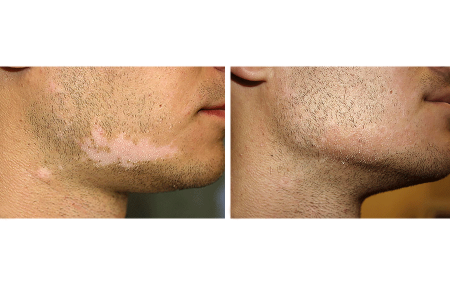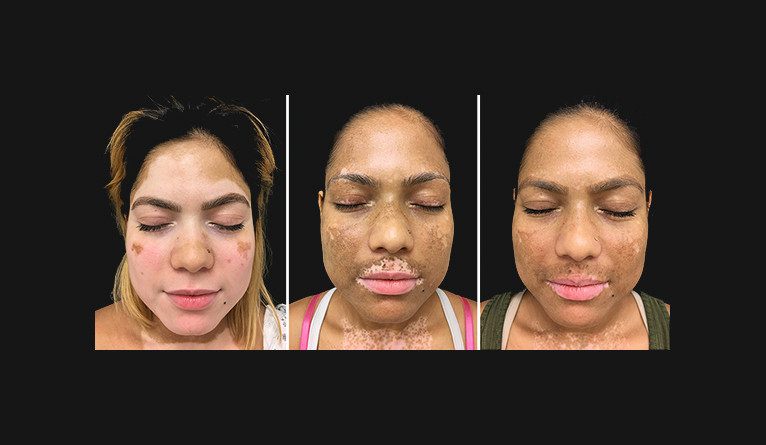
While there is no known cure for vitiligo, there are some treatments for the condition. Afamelanotide, a synthetic hormone, is being tested for use as a vitiligo treatment. This drug is implanted under the skin and promotes the growth of melanocytes. Other drugs are being researched as a cure for vitiligo, such as prostaglandin E2. You should also protect yourself from the sun’s rays, wearing water-resistant sunscreen, and avoiding the sun.
Fortunately, the condition is not dangerous and does not require medical attention. While it may affect your appearance, vitiligo is not a form of skin cancer or an infection like MRSA. Unlike many diseases that cause loss of pigmentation, vitiligo is not contagious and most people who suffer from it are healthy. It is believed that melanin cells are responsible for skin color. Without melanocytes, the skin would be white.
Although there are many treatments for vitiligo, there are several types of medical treatments for this condition. The most common treatments are light therapy and steroid therapy. These medications are often very expensive and have many side effects, such as thinning or streaking skin. Some of these medications may also cause a relapse of the disease. There are other treatment options for vitiligo, including tattoos.
Surgery can be an option. Blister grafting, for example, is a surgical procedure in which a surgeon creates blisters on pigmented skin and transplants them to discolored skin. This procedure can be quite effective for some patients, but it comes with many risks, including cobblestone-like skin and scarring. In addition, the skin damaged during the suctioning procedure may trigger another patch of vitiligo.
Some calcineurin inhibitors and narrow-band ultraviolet B (UVB) therapy are effective treatment options for vitiligo. However, both methods have some drawbacks and your dermatologist will recommend the best one for you. UVB is not skin safe and may not work for some people. Therefore, it is important to see a doctor if you have vitiligo on your skin. This can cause significant damage to the skin, and you won’t be able to use sunscreen for several months.

Several treatments are available. However, most of them are not effective for everyone. Some of them may work temporarily, but not for long. Even multiple treatments must be used to obtain the desired result. Most medications are not a cure for vitiligo, but they can help reduce the visibility of vitiligo. At https://www.vamospormas.org.mx/ you can find the right sunscreen for your specific skin type.
There are many treatment options for vitiligo. Medical treatments are often expensive and ineffective, but you can treat the disease naturally. Various supplements, vitamins and minerals can help. If you have a severe case, your doctor may prescribe corticosteroid tablets. This medicine will improve the condition but may cause side effects. If this is not effective, you will need to continue with the cream.
Wild duckweed is an herb that has been shown to restore pigmentation in the skin. The herb can be found in the summer and can be used to make a home remedy. A small amount of wild duckweed and honey can be mixed together to make a remedy. This can be used to treat vitiligo. While these treatments are not effective, they do have some benefits. If you’re looking for a vitiligo treatment, consider reading the following articles to learn more about the available treatments for the condition.
Currently, there are several methods for treating vitiligo. In the early stages of the disease, corticosteroid cream is the best option. This cream is very effective in restoring color to the skin. But it can take several months to take effect and can cause thinning of the skin. It is best to consult a dermatologist before taking corticosteroid treatment. You may have to endure a few side effects to get the desired results.
While there is no cure for vitiligo, treatment can help slow the process of discoloration. The most effective treatments are those that are effective for vitiligo, as well as those that are safe for the patient. While the condition cannot be cured, it can be managed and controlled. It is a condition that is difficult to hide and can be embarrassing for sufferers. In the case of women, the stigma can be so overwhelming that they may feel ashamed.
